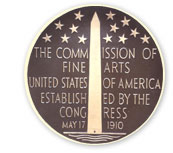Philip Kennicott writes yesterday in the Washington Post about the United States Commission of Fine Arts, whose seven members are currently all Trump appointees, four appointed at the last minute on January 12, 2021. Kennicott is scathing in his evaluation: “The original members, and the vast majority of those who followed them over the past 110 years, were giants in their field, while the Trump appointees who now run the CFA are minor figures, chosen not for their accomplishment but for their ideological conformity to a rigid doctrine of architectural classicism.” Kennicott’s point about ideological conformity is important. When I served on the Commission (2004-12) it included a variety of accomplished architects, landscape architects, and artists—Michael McKinnell, Diana Balmori, David Childs, John Belle, Elizabeth Plater-Zyberk, Teresita Fernández, Philip Freelon, Elyn Zimmerman, and Pamela Nelson. Our chair, Rusty Powell, had the art historian’s—and the Washington insider’s—long view. We had different tastes and different philosophies but the differences were accompanied by a sense of mutual respect. As a result we were able to usefully review projects by widely dissimilar architects and designers: Frank Gehry, Kevin Roche, James Polshek, Richard Rogers, David Schwarz, Norman Foster, Bing Thom, David Adjaye, Warren Cox, Laurie Olin, and Elizabeth Diller.
Kennicott’s second point about “minor figures” is likewise important. While the CFA has design approval authority in certain defined areas, it generally operates in an advisory capacity, that is, on the basis of moral suasion. This influence depends entirely on the reputations of the commissioners. “The Trump appointments to the CFA would effectively make the group useless and could lead to its demise,” writes Kennicott. His conclusion? “President Biden should move quickly to remove the current members.” A drastic suggestion that flies in the face of tradition—no CFA commissioner has ever been thus removed—but one that is warranted in this case.
Photo: Seal designed by Lee Lawrie, 1950



https://www.politico.com/news/2021/02/24/biden-trump-federal-architecture-order-471459
Well that was quick, considering everything else the administration currently has on its plate. Who knew the AIA has such clout? But where does that leave the D-list CFA, whose raison d’etre is pushing classicism? A mass resignation “in protest” would be a good, face-saving move.